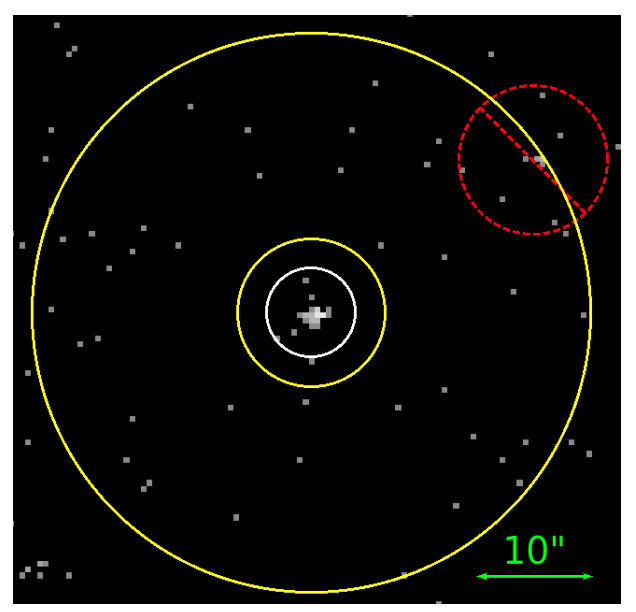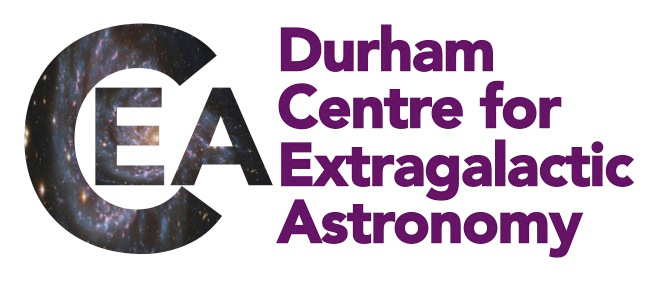CEA News, January 2023
The demographics of obscured AGN from X-ray spectroscopy guided by multiwavelength information
A complete census of Active Galactic Nuclei (AGN) is a prerequisite for understanding the growth of supermassive black holes across cosmic time. A significant challenge toward this goal is the whereabouts of heavily obscured AGN that remain uncertain. A new paper led by astronomers at the CEA sets new constraints on the demographics of this population by developing a methodology that combines X-ray spectral information with priors derived from multiwavelength observations.
 Figure 1 in the paper, this is an example of a source and background X-ray spectral extraction
regions for a radius set to EEF=70%. The source photon extraction region is represented by the
white circle with a radius of 3.80 arcsec.
Figure 1 in the paper, this is an example of a source and background X-ray spectral extraction
regions for a radius set to EEF=70%. The source photon extraction region is represented by the
white circle with a radius of 3.80 arcsec.
The authors select X-ray AGN in the Chandra COSMOS Legacy survey and fit their spectral energy distributions with galaxy and AGN templates to determine the midinfrared (6𝜇𝑚) luminosity of the AGN component. Empirical correlations between X-ray and 6𝜇𝑚 luminosities are then adopted to infer the intrinsic accretion luminosity at X-rays for individual AGN. This is used as prior information in our Bayesian X-ray spectral analysis to estimate physical properties, such as line-of-sight obscuration. Our approach breaks the degeneracies between accretion luminosity and obscuration that affect X-ray spectral analysis, particularly for the most heavily obscured (Compton-Thick) AGN with low photon counts X-ray spectra. The X-ray spectral results are then combined with the selection function of the Chandra COSMOS Legacy survey to derive the AGN space density and a Compton-Thick fraction of 21.0% at redshifts 𝑧 < 0.5. At higher redshift, our analysis suggests upper limits to the Compton-Thick AGN fraction of <∼40%. These estimates are at the low end of the range of values determined in the literature and underline the importance of multiwavelength approaches for tackling the challenge of heavily obscured AGN demographics.

